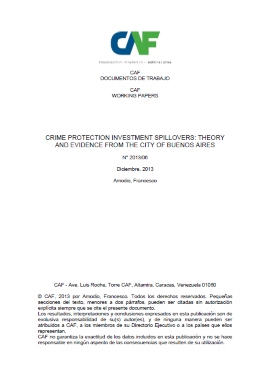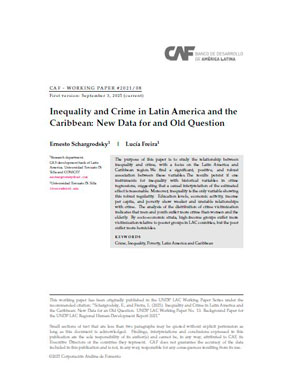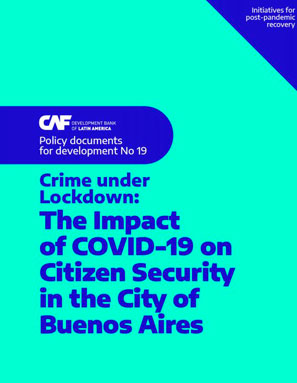| dc.contributor.author | Amodio, Francesco | es |
| dc.coverage.spatial | Argentina | es |
| dc.date.accessioned | 2014-10-15T20:04:16Z | |
| dc.date.available | 2014-10-15T20:04:16Z | |
| dc.date.issued | 2013 | es |
| dc.identifier.citation | Amodio, F. (2013). Crime protection investment spillovers: theory and evidence from the city of Buenos Aires. CAF Working paper, 2013/06, Caracas: CAF. Retrieved from https://scioteca.caf.com/handle/123456789/251 | en |
| dc.identifier.uri | https://scioteca.caf.com/handle/123456789/251 | |
| dc.description.tableofcontents | This paper studies spillover effects among potential crime victims from investment in observable protection technologies. Criminals and potential victims interact in a frictional market for offenses. Externalities within the two market sides arise as trading externalities, and their sign and size depend on the equilibrium changes in victimization probabilities. I explore the issue empirically using household-level geo-referenced data from the City of Buenos Aires. The City exhibits a significant level of spatial clustering of burglary protection investment. More importantly, investment by neighbors is shown to significantly affect individual households' investment decisions. In order to achieve identification, I exploit within-neighborhood variation in close neighbors' protection investment status as induced by their knowledge of crimes suffered by friends, relatives, acquaintances or others, occurred sufficiently far away. Indeed, information about others' victimization experiences is found to significantly increase the protection investment of neighbors, and can thus be used as a source of exogenous variation for the latter under relatively weak assumptions. Instrumental variable estimates show neighbors' investment in CCTV cameras and alarms to significantly increase a given household's propensity to invest in the same technology. No effect is found instead for special door locks, bars or outdoor lighting. Taken all together, results implicitly suggest the supply of criminals in the city to be relatively inelastic with respect to the intensity of protection in the average location, or perceived to be so by potential victims. | es |
| dc.language.iso | eng | es |
| dc.publisher | CAF | es |
| dc.relation.ispartofseries | CAF Working paper, 2013/06 | es |
| dc.rights | CC-BY-NC | es_ES |
| dc.rights.uri | http://creativecommons.org/licenses/by-nc/4.0/ | es_ES |
| dc.subject | Seguridad | es |
| dc.subject | Georreferenciación | es |
| dc.subject | Investigación socioeconómica | es |
| dc.subject | Ciencia y tecnología | es |
| dc.title | Crime Protection Investment Spillovers: Theory and Evidence from the City of Buenos Aires | es |
| dc.type | workingPaper | es |
| dc.publisher.city | Caracas | es |






